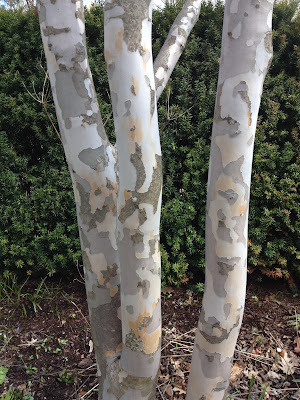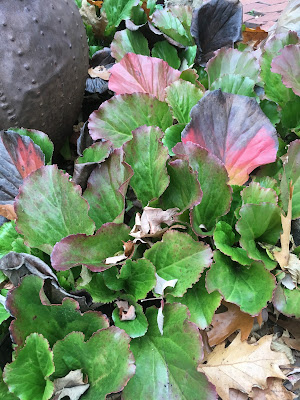As
the yew hedges have matured in the last 15 years, the scale and
proportions of the plantings have shifted. In the meantime, saplings
have become trees. As the height of the hedges rises, I have become much more
interested in the negative space that the borders in front of the hedges
have created against dark green foliage of the yew walls. I am reminded of a Dan Kiley quote that "proportion is
everything." Above is a photo of the garden last week during our first
snowfall. The yew hedge has finally created the room of my dreams and I
am trying to keep the scale and proportion of all the elements in check
for the best effect.
Here
is the same view of the Upper Garden, 'Hall with Balls' and Lower
Garden in October. I am planning to add another wall of yew along the
street (replacing the picket fence) to the far left of the photograph to
enclose the 'Hall with Balls'.
The enclosure with make the 'Hall with Balls' a stronger, more unified, space. I will continue to prune up the trunks on the Cornus officinalis
to contrast the dark yew hedge. I am also editing the placement of the
box balls to form the most pleasing visual arrangement. They have grown
more quickly than expected and have become more crowded than I had
imagined.
As I mentioned in my last post, I am transforming a pair of symmetrical stewartias into a grove of stewartias.
It is the texture of the bark and the sinew of the trunks that interest me most.


I
am beginning to lower the height of the under-planting of perennials and shrubs
beneath the stewartias in order to better display the buff-colored
trunks which contrast beautifully with the dark yew hedges. I am
enjoying the negative space that is created by the trunks from a
distance and at close examination.
The Right Border in early spring
The Right Border in the summer. I want to adjust the texture, height and color of the plantings to best feature the negative space of the backdrop of the yew hedge.
The Left Border in early spring
Plants
with dark foliage will contrast the granite wall best. The plantings
will be fine-tuned in the next couple of years to accentuate the line
between the plants and the grey wall.
I
have been also working on limbing up the crabapple tree in the Upper
Garden to have the most elegant shape possible. As the garden matures,
the way in which trees are pruned becomes an important feature in the
garden against hedges, walls and fences.




















































